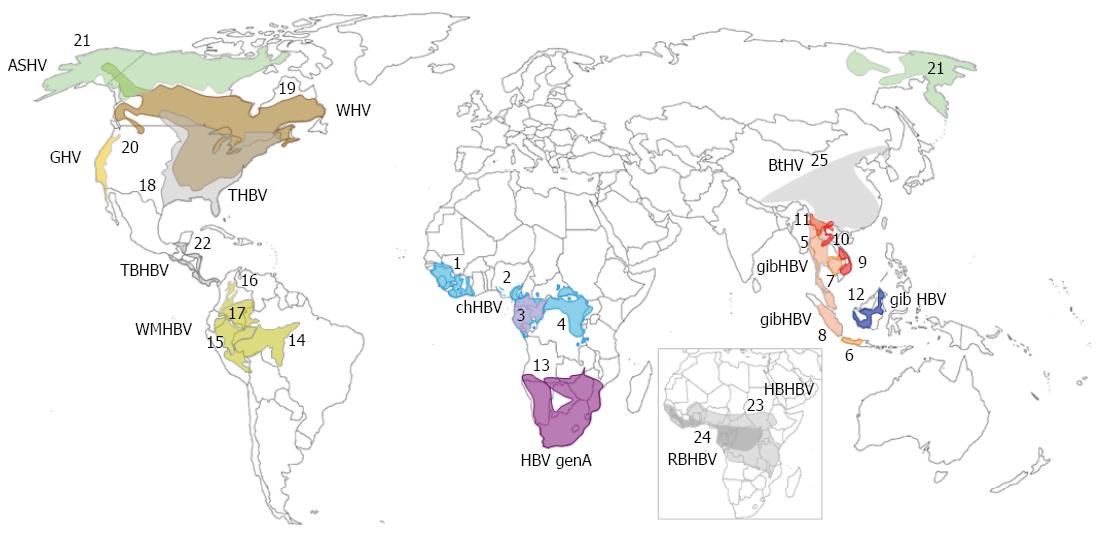Copyright
©2014 Baishideng Publishing Group Inc.
World J Gastroenterol. Jun 28, 2014; 20(24): 7665-7674
Published online Jun 28, 2014. doi: 10.3748/wjg.v20.i24.7665
Published online Jun 28, 2014. doi: 10.3748/wjg.v20.i24.7665
Figure 1 Geographic distribution of hepatitis B virus hosts.
Primates: 1: Pan troglodytes verus; 2: P. t. vellerosus; 3: P. t. troglodytes and Gorilla gorilla gorilla; 4: P. t. schweinfurthii; 5: Hylobates lar; 6: Hylobates moloch; 7: Hylobates pileatus; 8: Hylobates agilis; 9: Nomascus gabriellae; 10: Nomascus leucogenys; 11: Nomascus concolor; 12: Pongo pygmaeus; 13: Papio ursinus; 14: Lagothrix cana; 15: Lagothrix poeppigii; 16: Lagothrix lugens; 17: Lagothrix lagothricha. RODENTIA: 18: Sciurus carolinensis; 19: Marmora monax; 20: Otospermophilus beecheyi; 21: Spermophilus parryii. Chiroptera: 22: Uroderma bilobatum (partial distribution); 23: Hipposideros ruber; 24: Rhinolophus alcyone; 25: Miniopterus fuliginosus. HBV: Hepatitis B virus; ASHV: Arctic squirrel HBV; BtHV: Bat (Miniopterus fuliginosus) hepatitis viruses; chHBV: Chimpanzee HBV; GSHV: Californian ground squirrel HBV; gibHBV: Gibbon HBV; HBV genA: Human HBV genotype A; HBHBV: Horseshoe bat HBV; RBHBV: Roundleaf bat HBV; TBHBV: Tent-making bat HBV; THBV: Tree squirrel HBV; WHV: Woodchuck HBV; WMHBV: Woolly monkey HBV.
- Citation: Bonvicino CR, Moreira MA, Soares MA. Hepatitis B virus lineages in mammalian hosts: Potential for bidirectional cross-species transmission. World J Gastroenterol 2014; 20(24): 7665-7674
- URL: https://www.wjgnet.com/1007-9327/full/v20/i24/7665.htm
- DOI: https://dx.doi.org/10.3748/wjg.v20.i24.7665









